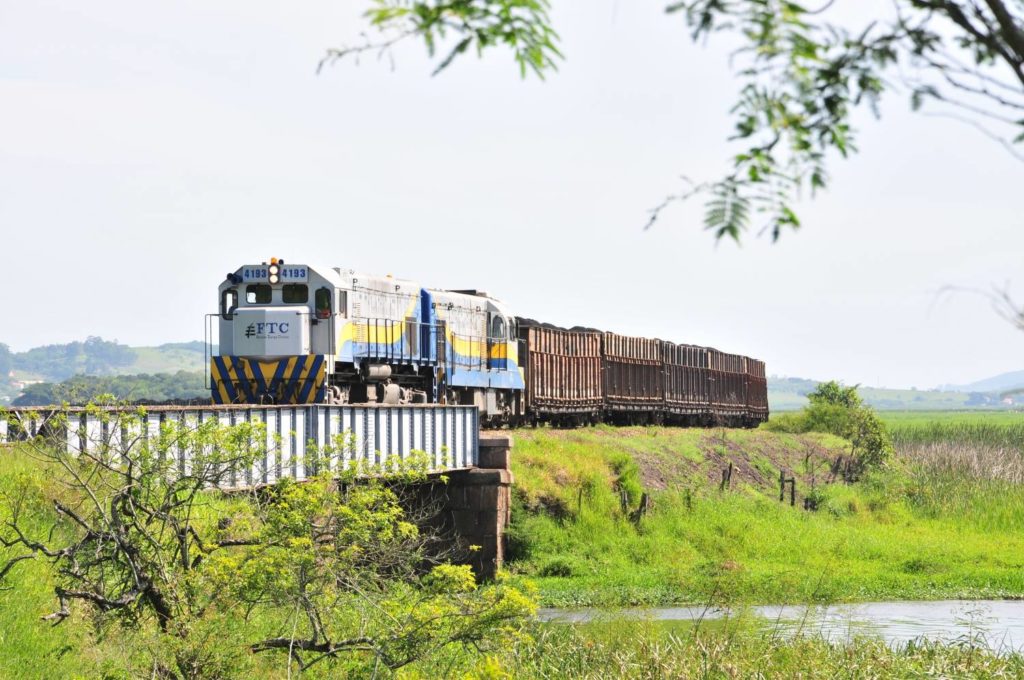São Paulo – Brazil’s railway sector expects a BRL 30 billion (USD 6 billion) in investments. This figure is particularly due to the renewal of concessions in some important lines. “It’s actually a conservative forecast, due to the renewal of contracts,” Brazil’s National Association of Rail Carriers (ANTF) executive director Fernando Paes told ANBA.
ANTF points out that these early contract extensions only could yield around BRL 30 billion. The renewals approved by the Investment Partnership Program (PPI) are expected to increase the share of the rail sector from 15% to 31% of all transportation in the country. “On one hand, we have this schedule of contract extensions. On the other, many of these companies are publicly traded,” Paes explained on other possibilities of new investors.
Moreover, the performance during the COVID-19 has been good. Overall, considering all sectors and products transported, 2020 saw a slight decline of 0.4% year on year. “It can be said the sector suffered little from the pandemic. We posted a smaller decline in sectors with small shares, so they don’t impact so much, and in ores we saw an oscillation,” the director considered.
Year on year, ore posted a 1% decline in volume transported. On the other hand, the sector that brings together agricultural, plant extraction and pulp products posted a 4% increase in 2020, improving the overall result. Paes points out that, after the first months of the pandemic, the sectors, including ore, saw a recovery. In December 2020, the volume transported by the ANTF concession-holders increased 11.5% from the previous year, particularly in agricultural bulk (12%), mineral bulk (12%) and fuels (21%).
Auctions
One opportunity the director stresses is Ferrogrão, with an expected investment of BRL 8.4 billion. The project aims at helping transport the beans with a railway from Sinop, Mato Grosso to Itaituba, Pará, where’s the Miritituba Port on the Tapajós River. Still being planned, the so-called greenfield was even considered as an investment by Saudis in 2017.
Another project that is set to attract attention later this year, ANTF director says, is the West-East Integration Railway (FIOL). Paes says the line will be tendered later this year, and the expected investment is BRL 5.4 billion (USD 1 billion). FGV’s Center for Studies on Infrastructure and Environmental Solutions (CEISA) coordinator Gesner Oliveira says that, out of the major projects, this should draw the most foreign investments. “FIOL is the largest project to be approved in 2021,” he said.
Besides investments in the railways, the growth of the sector will demand other products, too. “Out of the main inputs, we import rails. The rest we can manufacture here. And around this time (beginning of the year) there are many opportunities. Everyone is buying rails whether it’s for increasing railways or maintenance,” said Paes.
Railway regulatory framework
The sector expects Brazil’s Railway Regulatory Framework to help reduce the bureaucracy. “The framework itself is an improvement. Instead of a tender contract, which requires state regulation, an authorization model is forecasted. This flexibilization is new,” explained Oliveira on the bill that changes the railway tender model. The PLS 261/2018 project is being analyzed by the Senate, and Oliveira believes it can be approved in 2021.
The CEISA team believes the most appealing tenders for foreign investments are Ferrogrão and FIOL, which will have new contracts. The study group points out Brazil has now only 29,000 kilometers of railway network and believes that expanding and improving it helps reducing production flow costs in the country.
In addition to the extended lines, so-called short lines make it possible private investment in a shorter, more private railway, which feds the system, connecting major projects. Very common in the United States, they are not widespread in Brazil yet. CEISA says that in Minas Gerais, for example, a short-line proposal has been drafted. But ANTF director says the model is far from feasible in Brazil. Paes expects this type of line to be addressed in the project being analyzed by the Senate.
Translated by Guilherme Miranda




